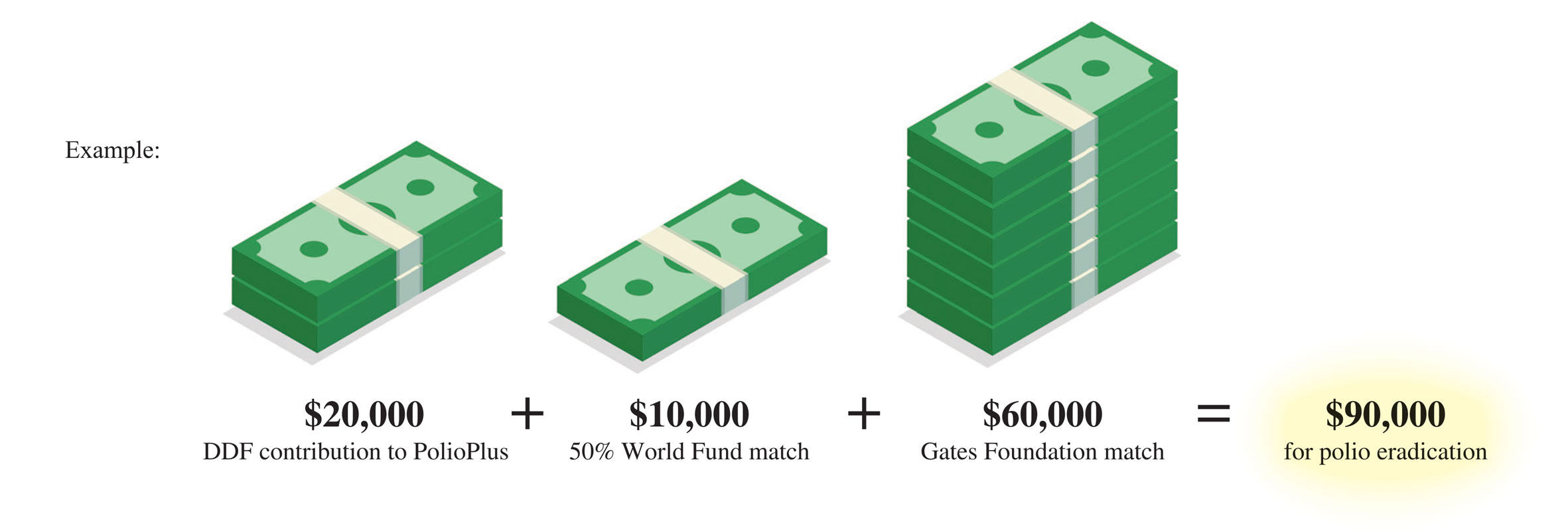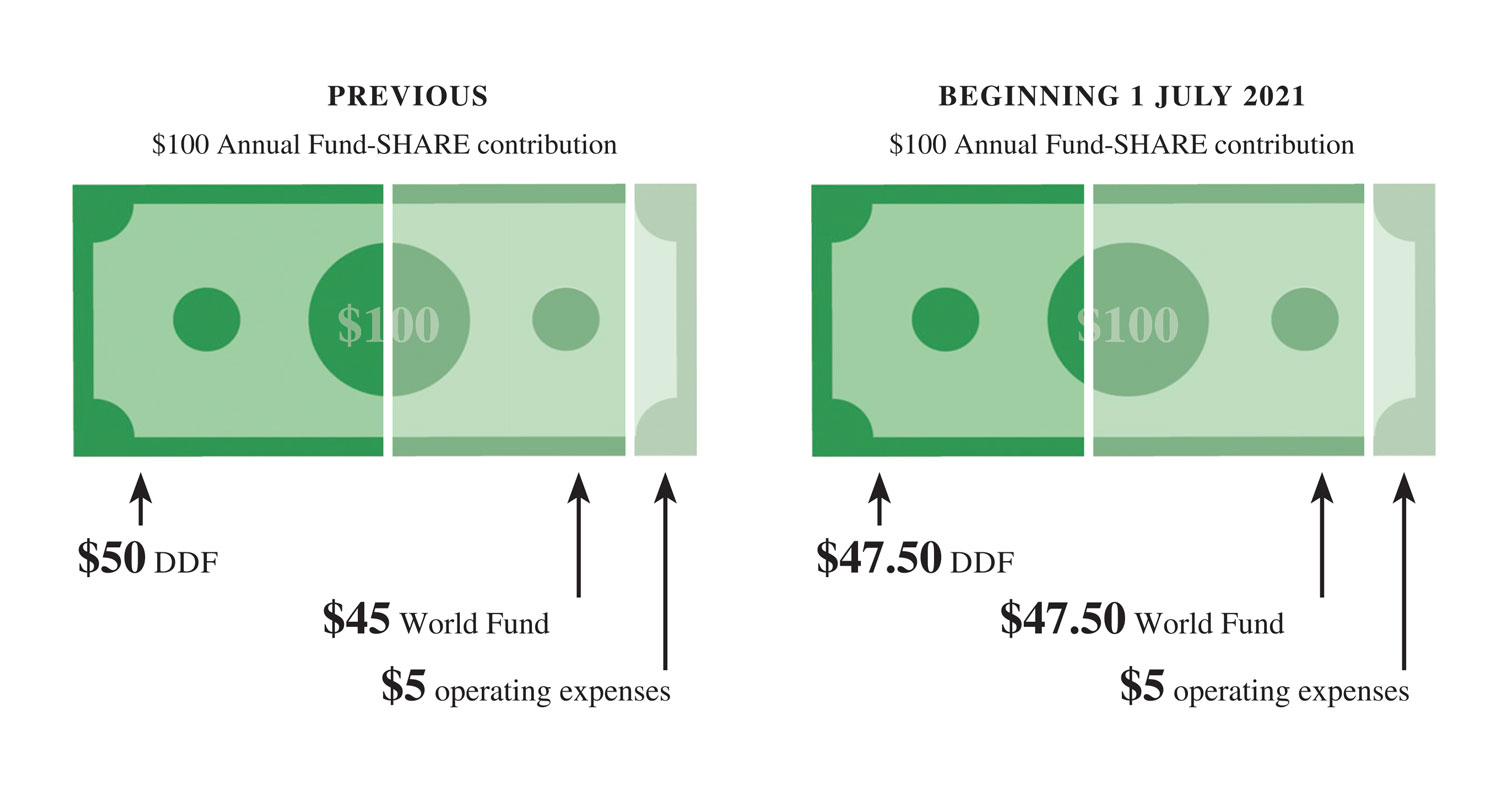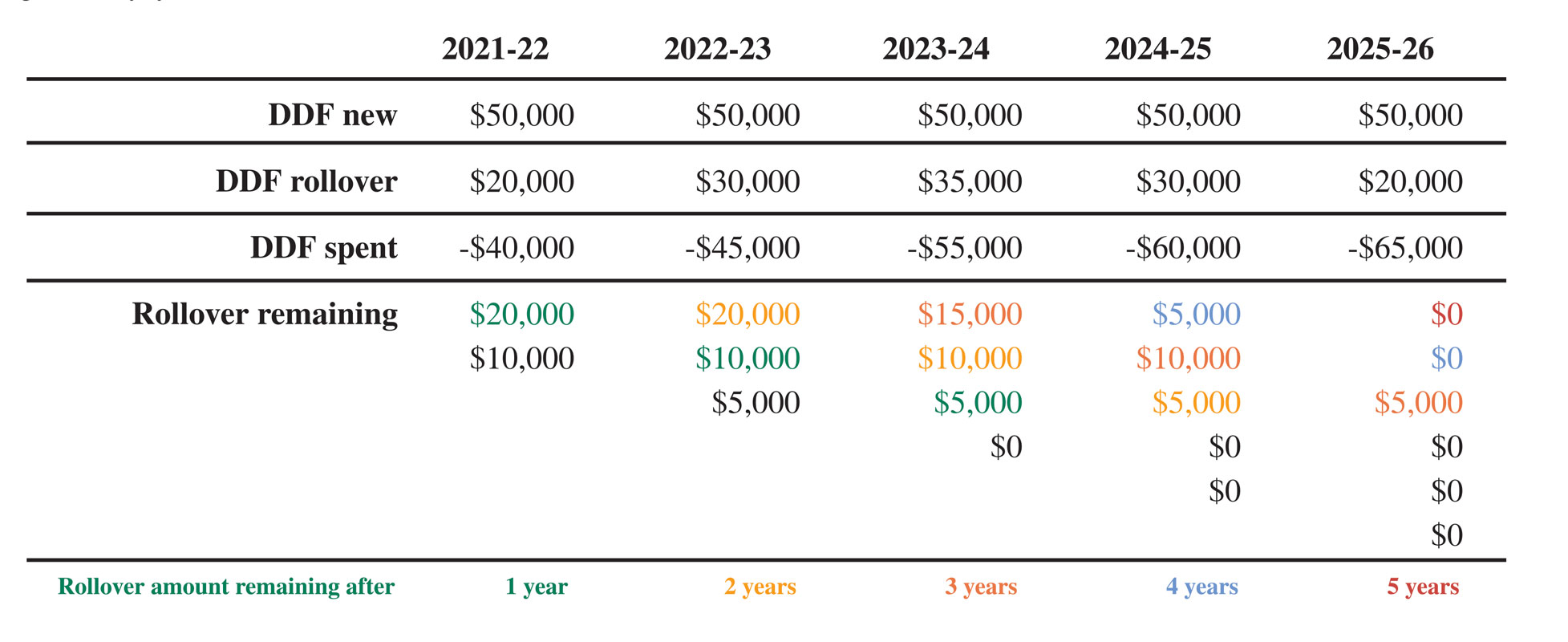A guide to the updated Rotary Foundation funding model
The amount of money The Rotary Foundation has awarded annually in global grants has more than doubled since the grants were introduced: from $47.3 million in 2013–14 to $95.6 million in 2019–20. Yet demand for global grants is so high that it has outpaced Annual Fund contributions, which means that not all eligible global grant requests are able to receive funding.
To ensure that the Foundation can fund as many global grants as possible in the future, the trustees of The Rotary Foundation have approved policy changes effective July 1. The changes will have a big impact on the Foundation’s ability to support more large-scale, sustainable projects for years to come. Read on to learn more.
Our funds: A glossary
Annual Fund-SHARE is the primary source of funding for a broad range of local and international Rotary Foundation activities. Every Rotarian, Every Year is the initiative to encourage support for the Foundation’s Annual Fund. It encourages every Rotarian to contribute to the Annual Fund every year. Contributions to Annual Fund-SHARE from Rotary members and other donors are directed into two subfunds: the World Fund and District Designated Funds. Through the SHARE system, contributions to The Rotary Foundation are transformed into grants.
The World Fund provides funding for our highest-priority activities around the globe. A percentage of SHARE-designated contributions is applied to the World Fund. The Foundation uses the World Fund to pay for grant and programme opportunities available to all Rotary districts, including PolioPlus, Rotary Peace Centres, Programmes of Scale grants, global grants and more.
District Designated Funds (DDF) can be used by districts to pay for Foundation, club and district projects that a club and others in the district choose. Districts may use up to half of their DDF to fund district grants. The remainder may be used for global grants or donated to Polio Plus, the peace centres, or another district.
The Endowment Fund, financed by cash gifts and bequests left by Rotary members and their families, ensures the long-term viability of the Foundation and its grants and programmes. Spendable earnings from the Endowment enable the Foundation to expand existing activities and underwrite new ones. Contributions are invested in perpetuity: A percentage of the total value of the fund is directed annually to Foundation grants and programmes.
How the model works
What’s unchanged
The Foundation’s basic funding model will remain the same. All Annual Fund-SHARE contributions are invested for three years, after which they are split between DDF and the World Fund. Earnings from the invested funds will continue to pay many of the Foundation’s operating expenses, which include fundraising and general administration. (A portion of investment earnings from the Endowment Fund, designated by the trustees, also helps to pay operating expenses.)
What’s changing
50% match on DDF contributions to PolioPlus
DDF contributions to PolioPlus will now be matched by the World Fund at 50 per cent rather than at 100 per cent as in the past two years. This will allow $5 million to be redirected each year, which could be used for other Foundation programmes, including global grants. The Bill and Melinda Gates Foundation will continue to match 2-to-1 every dollar that Rotary commits to polio eradication, up to $50 million per year. That makes it vital that we continue to make fundraising for polio eradication a top priority.
80% match on DDF applied to global grants
In recent years, the World Fund has been depleted before the Rotary year ends. Because of this, the Foundation has not been able to fund all the eligible global grant requests received. To allow greater participation in global grants, DDF applied to global grants will now be matched by the World Fund at 80 percent rather than at 100 percent as in the past. This change will enable us to fund more grants throughout the year.
Shared funding of operating expenses
Five per cent of Annual Fund-SHARE contributions are used to cover Rotary Foundation operating expenses. Previously, 45 per cent of the contributions were directed to the World Fund and 50 per cent were directed to DDF. For Annual Fund-SHARE contributions received beginning on July 1, 2021 (and allocated beginning on July 1, 2024), the remaining 95 per cent will be split equally between DDF and the World Fund.
Five-year limit on DDF rollover
Donors contribute to the Annual Fund with the expectation that these donations will be used to help communities in the near term. But the amount of DDF rolled over from one year to the next remains high. For example, on July 1, 2020, $48.8 million in DDF was unused and rolled over from the preceding Rotary year.
Starting on July 1, 2026, and at the end of each Rotary year thereafter, DDF amounts that have been held for five years or more must be used. Unused DDF can be applied to the Disaster Response Fund, the Endowment Fund, PolioPlus, the Rotary Peace Centers, or the World Fund, at the district’s discretion. If no fund is selected by the district, the rollover will default to the World Fund.
Additional changes
The Foundation Trustees had already approved several other measures to increase global grant funding in 2020–21. Cost-saving measures such as reducing operating costs have enabled an additional $4.4 million in global grants to be funded. And in January 2021, the Foundation Trustees and the RI board of directors transferred $15 million from the Foundation’s operating reserves and the RI budget surplus to the World Fund as a one-time measure to fund additional global grants in 2020–21. These two measures made nearly $20 million more in funding available in 2020–21. Additionally, the match on cash contributions to grants was eliminated effective July 1, 2020, freeing up an expected $7 million annually in the World Fund.
A conversation with 2021–22 Trustee Chair John F Germ
What concerns have you heard from members about the changes?
One of the greatest concerns was the 5 per cent going for operational costs: handling the money, stewardship, programming, and everything else we do. Previously, that money had come from the World Fund portion of Annual Fund contributions. But that’s not fair. We have administrative costs involved with district grants too. So effective July 1, 2024, the 5 per cent for operating costs will be split between the World Fund and DDF.
What process did you use to decide on these changes? What other options did you eliminate and why?
Two years ago, we began to realise we needed more money in order to fund the programmes and priorities that Rotary members have identified. We formed a World Fund working group of the trustees to look at both how to generate more money — the fundraising side — and how to change the way the programme is operating now. We were trying to look at how to make funding work over a long period of time, so that we aren’t going to Rotary members every year with changes.
We didn’t eliminate a whole lot. We left everything on the table; there was nothing sacred, including looking at staffing and ways to cut operational costs. We looked at our options and which would make the most impact.
One option was to leave things just as they were, and if we ran out of money, we ran out of money. In 2019–20 we ran out of money in May. In 2020–21 we were scheduled to run out of money in mid- December. That’s not really fair to the Rotarians around the world who are giving money expecting to get a return after it’s invested for three years.
What is the most important thing for Rotarians to know about the Foundation’s funding model?
The Rotary Foundation Trustees have three responsibilities: one, to raise money; two, to invest money; and three, to spend money. Right now we’re about $17 million per year short. We have to increase funding. It’s not just a funding model. We have to have money there in order to invest it and spend it.
Frequently asked questions
Rotary members and others contribute more than $300 million to the Foundation annually. How can there be a shortfall in the World Fund?
Of the $300 million contributed in an outright fashion each year, about $130 million is contributed to the Annual Fund-SHARE. The rest is given for specific purposes including PolioPlus, the Endowment Fund, global grants, the Disaster Response Fund, Rotary Peace Centers, or donor advised funds.
What are operating expenses?
Operating expenses are expenditures used for fundraising and general administration. These are funded with Annual Fund investment returns, Endowment Fund spendable earnings, 5 per cent of cash contributions for global grants, and 5 per cent of Annual Fund contributions.
Many donors have heard that “half comes back to the district.” Is this true?
After 5 per cent is deducted, half of all Annual Fund-SHARE contributions can be spent as DDF directed to the Rotary Foundation programmes most important to each district.
Will this affect our reputation as a leading charity?
Our stewardship of contributions has made The Rotary Foundation one of the most highly-rated nonprofits, according to reviews conducted by several independent charity rating agencies. We have received the top four-star rating from Charity Navigator for 13 years straight, which puts us in the top 1 per cent of charities. In fact, the three leading agencies that provide information about nonprofits — the BBB Wise Giving Alliance, Charity Navigator and GuideStar — changed their model of reviewing nonprofits to emphasise impact. While it is still important to keep overhead costs reasonable, the agencies say that investments in training, planning, evaluation, internal systems and operations are also critical. You can read the joint letter at overheadmyth.com.
When does the clock start on the rollover of DDF?
Any DDF rolled over from 2020–21 to 2021–22 will be subject to the new five-year limit on rolling over those funds.
When a district applies for a new global grant, will it use the current DDF or the oldest rollover?
Funding for new global grants will first be deducted from the current year’s DDF and then from the oldest rollover year.
© Rotary






